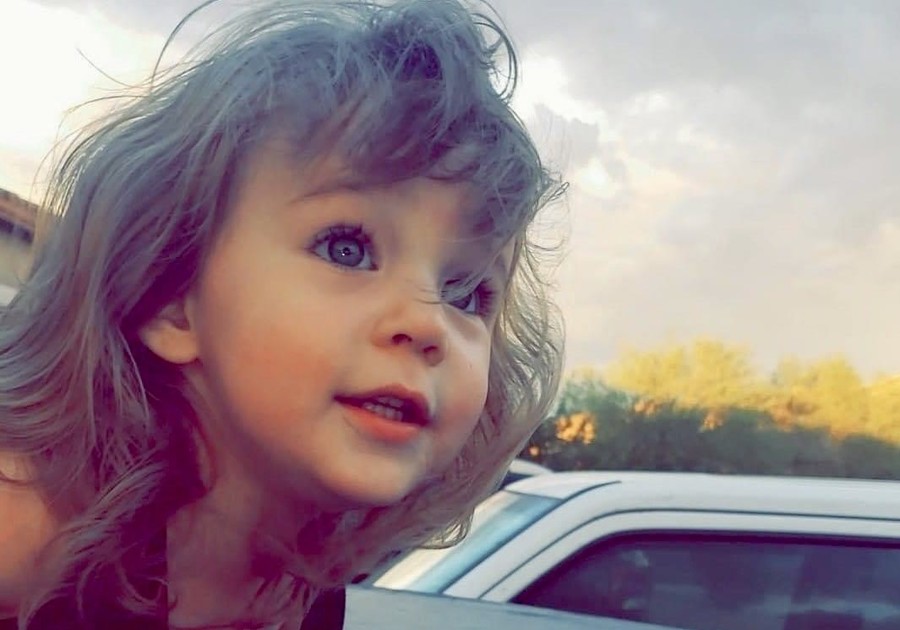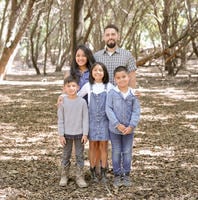On the evening of August 29 th, 2020, my brother, Ricky received a tragic phone call that would change him for the rest of his life. His ex, the mother of my precious niece Amy, called and said that Amy had drowned. At that very moment, their neighbor was doing CPR. My brother heard the ambulance arrive in the background and reality hit. Ricky and his wife, Billy, jumped into immediate action and met them at the hospital. Amy was with her mother at a birthday party at her cousin’s house. The backyard was full of people and the kids were swimming. Amy had been in the pool with her puddle jumper on and came out to eat some pizza. Amy’s mom removed Amy’s puddle jumper to eat and asked her cousin to watch her while she went in the house to use the restroom. When mom returned about 15 minutes later, people were screaming and panicking in the yard. A boy noticed Amy floating in the pool, face down, and yelled for help. Amy was pulled out of the pool and their neighbor started CPR as someone called 911. The guess was that Amy was under water close to 10 minutes, but no one will ever know the exact amount of time. The neighbor continued to perform CPR until the ambulance arrived around 15 minutes later. In the ambulance, they continued CPR another 15 minutes. When they arrived at the hospital, they continued CPR an additional 45 minutes until they finally had a pulse. Once the hospital staff had a pulse, they rushed Amy for a brain scan (CT) and took her to the NICU. She was declared brain dead. There were no improvements to Amy’s condition over the next few days in the hospital. She had multiple strokes that gave Amy’s parents false hope because of the activity that would show on the monitor. My brother and his family live in Arizona. I saw a post from his wife, Billy, on Facebook and was confused to what was going on. I called Ricky asking why Amy was in the hospital. Ricky told me she had drowned, and I instantly felt sick, and it took me a moment to process this horrific news that my brother struggled to tell me. I was at a loss for words. All I knew was I had to go and be with them and flew to Arizona on September 2nd, 2020. The family took turns to visit with her, including Amy’s mom and her family members because of the visitor rules due to covid. I was able to go see Amy once with my brother and I will never forget it, but I am grateful I was able to see her. Still till this day, I cannot express or completely explain it, but I knew in my heart, it was the time to say my goodbye. On September 4 th they removed Amy off the vent and after several hours, she passed away peacefully in her parent’s arms at 2-years-old. I share this story with you all to keep Amy’s memory alive. Amy was smart, adorable and had a bubbly and playful soul. She was the youngest of 4 sisters and 1 brother. They all miss her dearly and hold her memory in their hearts. Their souls will forever be changed in the loss of sweet little Amy. Drowning is a lot more common than most people think. Drowning is the leading cause of death in children ages 1-4. Many drowning deaths have evidence that just hours prior to the water tragedy, the child was seen using a puddle jumper or floatation device for swimming. Children get a false sense in the water when wearing floatation devices and do not connect the fact that they cannot swim after removing them. In Amy’s case, there was not a pool gate around the pool for a barrier of protection either.
At 18 months old, I enrolled my son into swim lessons with Miss Julie, (Water Safe Swim). I was already on edge once my son began walking because we have a pool in the backyard. I knew instantly, that I had made the right choice on our first day. My son learned to swim, float and swim to a float at 18 months within 3 weeks. I was amazed! Watching his lessons, lit a fire in me. I grew a passion like I’ve never felt before, I knew that I needed to do my part and become a swim instructor myself. Although I was hesitant, I reached out to Julie to ask her how she started her swim journey. It is a blessing to have connected with Julie and I am now a certified trainer with Water Safe Swim. My goal is to spread awareness of the astonishing drowning statistics, educate parents and family members in water safety and help save lives in efforts to prevent drownings in our community and beyond. Water safety layers are crucial in drowning prevention. The following PREVENTION and SAFETY TIPS are some of the ways to LAYER your family against water tragedies. The goal is to put as many barriers/LAYERS, as possible, between your child and the water. The water safety layers I am sharing are not listed in any specific order because layers of protection work together, and each layer is equally important as the next.
• Constant supervision. Have a designated water watcher and always make sure to pay 100% attention on the water. No phones or other distractions. A child can drown in the amount of time it takes to respond to a text message.
• Pool gate or barrier – pool alarms – door alarms – pet door locks or alarms etc.
• Do not leave toys or other items that would interest a child to get close or into the water. Do not leave chairs, ladders or other objects near the pool that would allow a child to climb the fence.
• Keep the pool water clean. Cloudy or murky water can be a hazard. Water levels should be as close as possible to the top to make grabbing the edge and climbing out easier.
• Check the water first. If you cannot locate your child, always check the water first, SECONDS MATTER.
• Teach your children from the time they can talk to ALWAYS ASK PERMISSION BEFORE ENTERING ANY BODY OF WATER.
• Learn CPR to perform in case you end up an emergency.
• Buy bright bathing suits for your children so that they are easily seen in the water. Blues or greens are extremely hard to see.
• Skill the child! Enroll your children in swim lessons. A child can start swim lessons as early as 6 months old to learn crucial survival skills in the water.
• DO NOT USE FLOTATION DEVICES FOR SWIMMING: Flotation devices are not intended and are not US Coast Guard approved for swimming. They are marketed that way but if you read the fine print, it will always state US Coast Guard approved for CLASS III PFD use). Life Jackets, Puddle Jumpers, water wings, or any kind of floatation device are not designed or made for swimming. Beware of the difference between marketing ploys and the truth of use for quick rescue in open water. When used for swimming these devices lend a false sense of security to you and your child. In addition, the vertical posturing a child develops by using these devices is detrimental to learning true swimming skills that could save their life and in fact is more likely to result in drowning. *Note: Always follow your local law regarding US Coast Guard approved PFD’s/life jackets on all open water moving vessels including paddleboards, kayaks, canoes, jet skis and rafts. A Class III PFD without the back flap and with a leg strap is the safest life jacket for infants and toddlers.
I know that this can be a sensitive subject, but this is reality. Knowledge is power and being aware is critical in preventing tragedies of all categories. Pediatricians share many different preventative measures with parents to keep their children safe, but nothing is said about drowning when it is the leading cause of death in ages 1-4. That is why I chose to share Amy’s tragedy and the reason I now teach children swim lessons. Swimming is an essential life skill that we can provide for our children and is one of the many water safety layers in preventing a water tragedy such as Amy’s.
FOR MORE INFORMATION: Contact Tiffany, Instructor, Water Safe Swim Morada,
talbritton22@gmail.com, 209.331.6936



